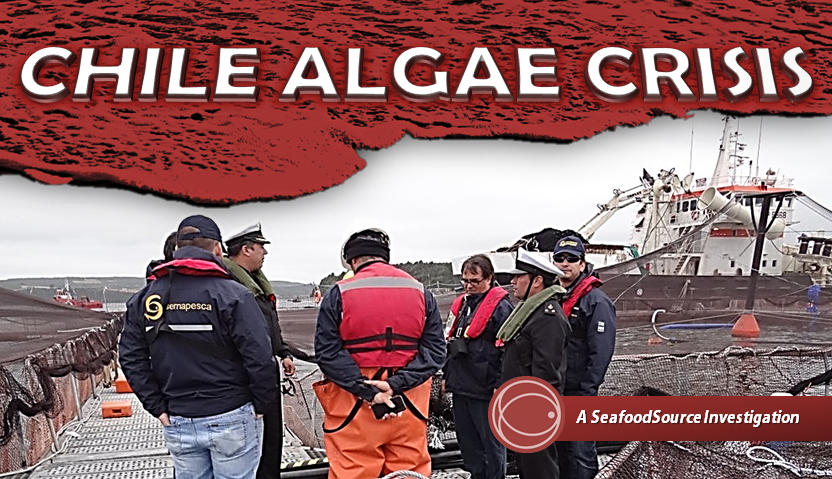Chile algae crisis: Financial loss, potential gains and the future of the Chilean salmon industry

Chile, the world’s second-largest fresh salmon exporter, has suffered losses equivalent to 90,000 tons of farmed Atlantic salmon to the recent algal bloom in the Los Lagos region of Chile, according to a spokesperson for the Chilean salmon industry group. But he and members of the industry are hoping a recent decrease in mortalities may mean the bloom is past its peak.
Felipe Manterola, the general manager of SalmonChile, said 5,000 tons of Coho salmon had also been lost as a result of the bloom. As a result, the Chilean salmon industry has suffered the loss of 15 percent of its production, affecting every salmon farming company operating in Region X, he said.
“The good news is, in the last few days, mortalities have decreased. But the algae bloom is still there and we are still actively monitoring its progress,” he said. “Hopefully it will decrease as the weather conditions will change in the next few days.”
The algae bloom, or red tide, began 22 February but became much larger and more aggressive a week ago, starting 1 March, Manterola said.
“The cause is completely natural and environmental, and there’s very little we can do to stop or change it in any way,” he said.
Damage assessment
Companies affected include AquaChile, Australis Mar,
According to the Chilean financial news site Diario Financiero, by 3 March, Camanchaca estimated it had lost almost all of its salmon at its Puelche,
Marine Harvest Chile announced last week it expected total losses of 2.9 million fish at its Punta Redonda,
Australis suffered unspecified losses at its Calbuco farm, where it has 1.1 million Atlantic salmon worth an estimated USD 6.5 million (EUR 5.9 million), also according to T13.
Continued on the next page >>






Share